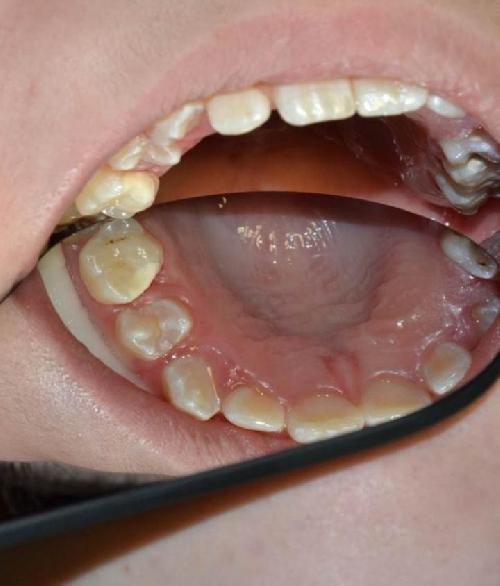Scientists led by Queen Mary University of London (QMUL) and Aberystwyth University have revealed 'sweet points' for dental fillings, where cement used to fill cracks regain elasticity before hardening indefinitely. This could have implications for creating more durable and longer-lasting fillings in the future.
Typical dental glass cement, a UK innovation, is made from glass powder, liquid polymer and water, and is the preferred non-toxic choice* to mercury amalgam, which has been used for filling teeth for almost 200 years.
Publishing in the journal Nature Communications, the team used nano-level dentistry to measure how cement sets in real-time.
 This shows typical dental glass cement, a UK innovation. It is made from glass powder, liquid polymer and water, and is the preferred non-toxic choice to mercury amalgam, which has been used for filling teeth for almost 200 years. Credit: Semmelweis University Dental School
This shows typical dental glass cement, a UK innovation. It is made from glass powder, liquid polymer and water, and is the preferred non-toxic choice to mercury amalgam, which has been used for filling teeth for almost 200 years. Credit: Semmelweis University Dental School
They looked at the surface between the hard glass particles and surrounding polymer as the strength of the cement develops.
Guided by computer models, they used intense beams of neutrons from the Science and Technology Facilities Council's (STFC) neutron and muon source, to find that dental cement sets in fits and starts rather than hardening continuously. The findings identify 'sweet points' in time: when the cement starts to approach the toughness of the tissue that our teeth are made of and occur in first 12 hours of setting.
Co-author Dr Gregory Chass from QMUL's School of Biological and Chemical Sciences explains:
"Most of us have fillings in our teeth and know that a crack means a trip to the dentist for a replacement.
"Our works opens up the possibility of tailoring the strength of non-mercury cements by homing in on the special setting points, which we call 'sweet points', to make environmentally-friendly dental fillings that not only last longer but could prevent further tooth decay."
Understanding 'sweet points' of dental cement could lead to better applications of fillings and easier treatment options for patients.
Co-author Professor Neville Greaves from the Department of Physics at Aberystwyth University said:
"Dental fillings are really complex materials. Using neutrons we have discovered how mechanical toughness develops, element by element. This is fundamental physics in action for the general good."
The findings could have implications for other industries that use cement, such as construction, and to test toughness in other materials.
Andrew Taylor, Executive Director of STFC's National Laboratories, said:
"It is always gratifying to see outcomes such as this coming from science at STFC's facilities and in this case, our neutron and muon source. Neutrons have such a broad range of applications and are used by scientists looking at everything from stresses and strains in plane wings to progressing methods to producing more effective antibiotics.
"We can see here how a fundamental technique is applied to an everyday issue that we can all identify with."
The research was funded by STFC, Engineering and Physical Sciences Research Council, Royal Society of Chemistry, Wuhan University of Technology in China, and TAMOP in Hungary.
source: Queen Mary, University of London